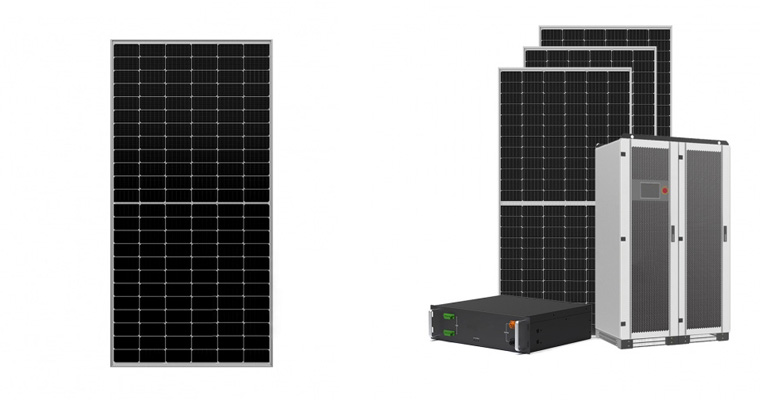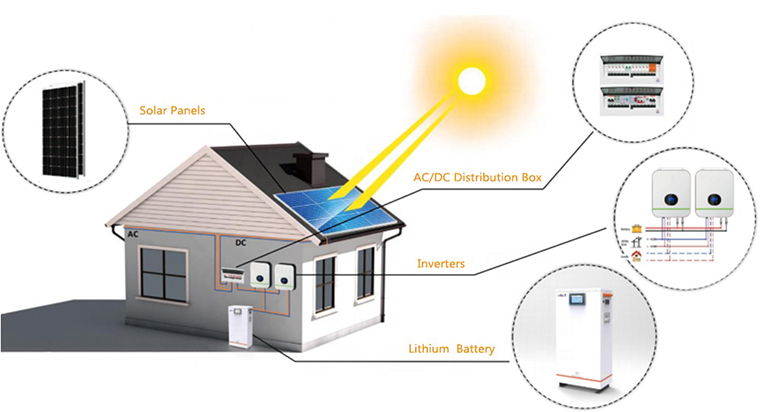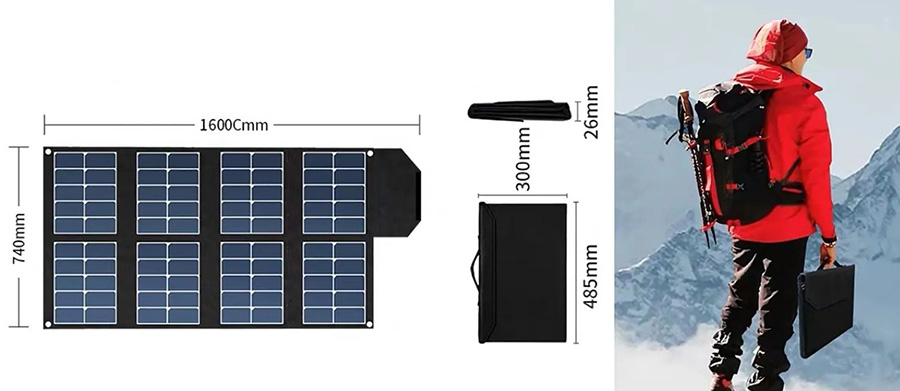
System installation
1. Solar panel installation
In the transportation industry, the installation height of the solar panels is usually 5.5 meters above the ground. If there are two floors, the distance between the two floors should be increased as much as possible according to the light conditions of the day to ensure the power generation of the solar panels. Outdoor rubber cables should be used for solar panel installation to prevent damage to the outer sheath of the cables caused by long-term household work. If you encounter areas with strong ultraviolet rays, choose photovoltaic special cables if necessary.
2. Battery installation
There are two types of battery installation methods: battery well and direct burial. In both methods, relevant waterproofing or drainage work must be done to ensure that the battery will not be soaked in water and the battery box will not accumulate water for a long time. If the battery box has accumulated water for a long time, it will affect the battery even if it is not soaked. The wiring screws of the battery should be tightened to prevent virtual connection, but it should not be too forceful, which will easily damage the terminals. The battery wiring work should be done by professionals. If there is a short circuit connection, it will cause fire or even explosion due to excessive current.
3. Installation of the controller
The conventional installation method of the controller is to install the battery first, and then connect the solar panel. To dismantle, remove the solar panel first and then remove the battery, otherwise the controller will be easily burned.

Matters needing attention
1. Reasonably adjust the installation inclination and orientation of the solar panel components.
2. Before connecting the positive and negative poles of the solar cell module to the controller, measures must be taken to avoid short-circuiting, and be careful not to reverse the positive and negative poles; the output wire of the solar cell module should avoid exposed conductors. 3. The solar cell module and the bracket should be connected firmly and reliably, and the fasteners should be tightened.
4. When the battery is put into the battery box, it must be handled with care to prevent damage to the battery box;
5. The connecting wires between the batteries must be firmly connected and pressed (but pay attention to the torque when tightening the bolts, and do not screw the battery terminals) to ensure that the terminals and the terminals are well-conducted; all series and parallel wires are prohibited from short-circuiting and Wrong connection to avoid damage to the battery.
6. If the battery is buried in a low-lying area, you must do a good job of waterproofing the foundation pit or choose a direct-buried waterproof box.
7. The connection of the controller is not allowed to be wrongly connected. Please check the wiring diagram before connecting.
8. The installation location should be far away from buildings and areas without obstructions such as leaves.
9. Be careful not to damage the insulation layer of the wire when threading the wire. The connection of the wire is firm and reliable.
10. After the installation is completed, a charge and discharge test should be carried out to confirm that the system is working properly.
System Maintenance In order to ensure the working days and life of the solar system, in addition to a reasonable system design, rich system maintenance experience and a well-established maintenance system are also essential.
Phenomenon: If there are continuous cloudy and rainy days and two cloudy days and two sunny days, etc., the battery will not be fully charged for a long time, the designed working days will not be reached, and the service life will be obviously decreased.
Solution: When the battery is often not fully charged, you can turn off part of the load. If this phenomenon still exists, you need to turn off the load for a few days, and then turn on the load to work after the battery is fully charged. If necessary, additional charging equipment with a charger should be used to ensure the working efficiency and life of the solar system. Take the 24V system as an example, if the battery voltage is lower than 20V for about a month, the performance of the battery will decline. If the solar panel does not generate electricity to charge the battery for a long time, emergency measures must be taken to charge it in time.

Post time: Apr-01-2023




